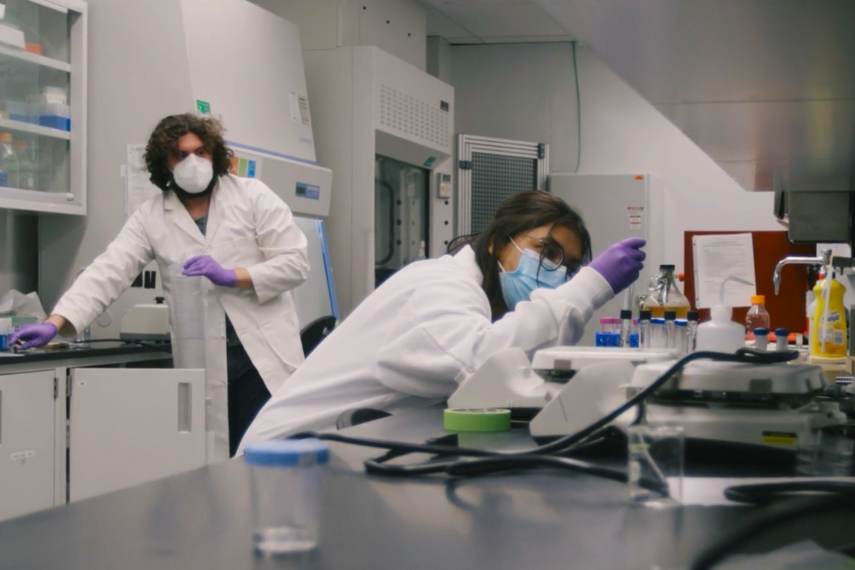Tackling Banana's Foe: Cold Plasma's Promise

Innovative cold plasma battles crown rot, preserving bananas and reshaping agriculture sustainably.
Banana's Battle: Crown Rot Threat
Fruits and vegetables are not only vital components of a nutritious diet but also significant contributors to economies worldwide. Among these, Bananas, with their convenient packaging, natural sweetness, and rich nutrient profile, have earned their place as a globally cherished fruit. However, their widespread popularity has also made them vulnerable to a destructive force: crown rot. This formidable foe, caused by cunning fungi like Lasiodiplodia theobromae and Colletotrichum musae, not only decimates banana yields but also threatens their taste and shelf-life resulting in economic losses for producers, distributors, and consumers.
Traditional solutions, such as pesticide use, have long been the go-to method for controlling crown rot. However, this approach comes with a set of troubling issues. Pesticides can harm not only the targeted pests but also beneficial organisms, leading to disrupted ecosystems. Additionally, the improper use and handling of pesticides can have severe consequences for human health, causing acute and chronic illnesses. Striking the right balance between safeguarding crops and maintaining ecological harmony is a challenge that demands innovative solutions.

College of Engineering and Physical Sciences,
Revolutionizing Agriculture with Cold Plasma
Enter high-voltage atmospheric cold plasma treatment – a technology that harnesses the power of physics to combat crown rot while sidestepping the pitfalls of chemical pesticides. Cold plasma generates reactive species that possess strong antimicrobial properties. These species act as soldiers on the front lines, targeting crown rot-causing fungi without harming the fruit or leaving behind harmful residues. This approach aligns with the global push for sustainable and environmentally friendly agricultural practices. Cold plasma technology offers a compelling alternative to the conventional pesticide approach. By adopting this method, not only the pressing concern of crown rot is addressed but also contributed to a safer and more sustainable food production system. This technology's potential to revolutionize banana cultivation extends to other crops as well, presenting a pathway to a more secure and health-conscious food supply.
Pioneering Cold Plasma: Cutting-edge Research
In the pursuit of a pesticide-free solution, Prof Kevin Keener from the University of Guelph (an expert in bacteriocidal fungicidal treatments), Prof. Ximena Yepez from Escuela Superior Politécnica del Litoral and their research team undertook a meticulous scientific approach. They designed experiments that replicated the real-world conditions in which bananas are stored and transported. By exposing bananas to direct and indirect cold plasma treatments, researchers evaluated the efficacy of this technology against crown rot-causing fungi. Cutting-edge techniques like optical emission spectroscopy – which analyzes the light emitted by atoms or molecules to provide information about their composition and characteristics - were employed to evaluate the reactive species generated by the cold plasma treatment. This rigorous methodology ensures that the findings are not just theoretical but rooted in practical applicability.

Professor at Escuela Superior
Outstanding Results: Cold Plasma's Next Steps
The outcomes of this study have revealed promising information to tackle the crown rot issue of bananas. Cold plasma treatment emerged as a potent adversary against crown rot, rivalling the effectiveness of traditional fungicides. This breakthrough does not just stop at preserving banana appearance; it maintains essential qualities like taste, texture, and nutritional content. This means that the bananas we consume remain a delight to the palate and a valuable source of vital nutrients.
Beyond its immediate impact, cold plasma aligns with global efforts to reduce the environmental footprint of food production while ensuring food security. This achievement is not just confined to the realm of bananas; it opens doors to safer, healthier, and more sustainable agricultural practices worldwide as said by Prof Keener: “I see this technology as a promising contender for transforming food processing. Its nonthermal nature allows for application at room temperature, while its energy efficiency adds to its appeal. With a cost-effective profile, it holds the potential to address food waste, minimize losses, and contribute to reducing greenhouse gas emissions.”
This story was written by Kasra Ghasemi as part of the Science Communicators: Research @ CEPS initiative. Kasra is a PhD candidate in the School of Engineering under Dr. Syeda Humaira Tasnim and Shohel Mahmud. His research focus is on developing innovative solutions to poor packaging systems and conventional refrigeration methods and their contributions to food waste and global warming – a Latent Heat Thermal Energy Storage system with micro-scale capsules.
Funding Acknowledgement: This research is funded by Escuela Superior Politécnica del Litoral (ESPOL) located in Ecuador to afford the required facilities and equipment.
Reference: D. Yagual et al., “Control of crown rot on Cavendish banana by high voltage atmospheric cold plasma treatment,” J. Food Eng., vol. 357, p. 111654, Nov. 2023, doi: 10.1016/j.jfoodeng.2023.111654.